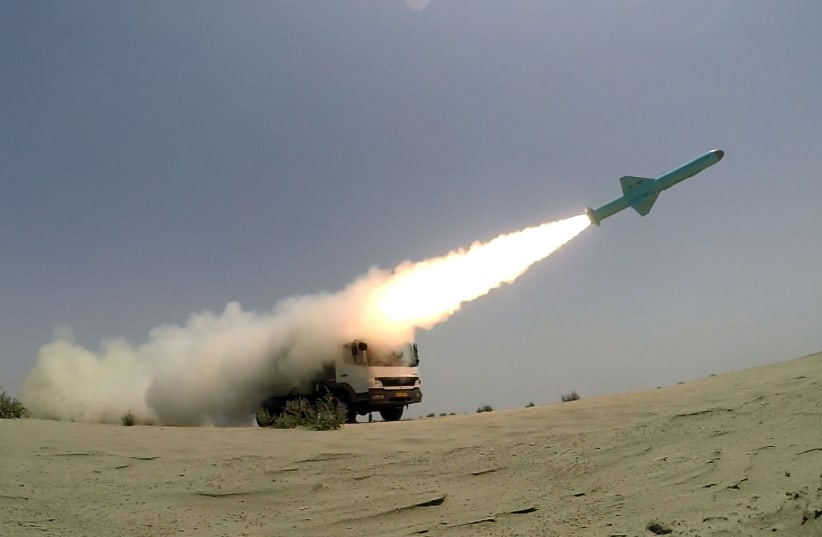In the Iranian rhetoric playbook, every failure must be met with an equal and opposite claim to some form of success. The failure of Iran to protect critical infrastructure, as well as a series of explosions at a missile factory and nuclear site over the last week and a half, led Tehran to point to new “missile cities” as part of its arsenal, which makes it a “nightmare” for enemies. What is a “missile city” and why is Iran talking about this now?
The comments were made Sunday by Iran naval chief R.-Adm. Alireza Tangsiri, who said Iran has “underground cities that house vessels and missiles.” The entire shoreline of southern Iran has these weapons, he asserted.
Most of these weapons systems are in the hands of the Islamic Revolutionary Guard Corps, not the regular Iranian navy. They consist of various marine forces, including units of the Basij, reports in Iranian state media claim. They include 428 flotillas along 2,200 km. of coastline. The systems are concentrated at key areas along the Persian Gulf and facing the Gulf of Oman.
Iran has carried out tests in the past with these fleets of fast boats and its missiles. Overall, the program appears linked to comments made in October 2019 by Ali Hajizadeh of the IRGC aerospace force about various underground missile sites. The missile “cities” on the coast have been constructed on the shoreline or in facilities off the coast on islands and other areas. The full details of how they are run and whether the IRGC’s navy or aerospace elements run them is not clear.
The bragging about the “missile cities” comes in the wake of a mid-June test of an Iranian cruise missile that was fired out to sea, which supposedly has a range of 280 km. Iran also said in April it had increased the range of its naval missiles to 700 km.
However, Iran shot a missile in May that mistakenly hit one of its own ships, killing more than a dozen sailors. This is the other face of Iran’s military program. In an attempt to increase capabilities and show off, Iran has made many mistakes and taken shortcuts. It shot down a Ukrainian civilian airliner in January. In early June, satellite photos also showed that Iran had reconstructed a large-scale model of a US aircraft carrier to practice destroying it.
Tehran has been increasingly aggressive at sea. It conducted a massive “toward al-Quds” drill in early 2019 using dozens of drones and watercraft. The name of the war game was meant to evoke the “path to Jerusalem,” as if Iran was striking at Israel. In fact Iran was threatening ships going through to the Persian Gulf. In May and June it mined six of those ships. It also shot down a US surveillance drone that was flying near Iran’s coastline. It harassed US ships in April, as it had done many times before.
This is the context of the “missile cities” story. Iran may feel the need to lash out, since it is under pressure from US sanctions and has appeared to suffer new setbacks to its nuclear and missile program. So Tehran lashed out in September, attacking Saudi Arabia’s Abqaiq oil refineries using drones and cruise missiles.
